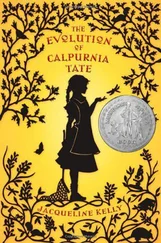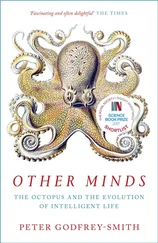Military history offers numerous examples of the institutionalization of instruments. The Roman army, which had conquered most of the known world by means of the legion, was unable, and probably unwilling, to transform itself into a force of heavily armed cavalry when this became necessary in the late fourth century of our era. As a result, the Roman army, and the civilization it was supposed to defend, were wiped from the earth by the charging horsemen of Germanic barbarians, beginning with the dreadful defeat at Adrianople in 378. The inability of fighting men to reorganize their ideas and their forces from infantry to cavalry was one of the vital factors in the replacement of pagan Classical civilization by Christian Western civilization.
In the centuries from A.D. 700 to 1200, cavalry in the form of the medieval knight became as established in military tactics as the Roman infantry had ever been. In 732 the Saracens, whose relentless advance had begun in Arabia a century before, were defeated by the cavalry of Charles Martel at Tours, and the Christian West was saved from Moslem conquest. By 1099 the Western counterattack had reached in apex in the capture of Jerusalem. In the three-century interval between these two victories, Germanic and Frankish cavalry, under Charlemagne, Otto the Great, and others, had saved Western culture from numerous pagan threats. Methods of fighting from horseback had become well established, almost formalized, and had begun to assume those chivalric embellishments that contributed so much to the institutionalization of this method of warfare. Noble youths, as we all know, spent years in jousting and tournaments to achieve the skill considered necessary for success on the field of battle.
The supremacy of the medieval knight was still unquestioned in the early decades of the fourteenth century. The defeat of French chivalry at the hands of bourgeois infantry before Courtrai in 1302 was dismissed by the losers as an inexplicable and unrepeatable accident. On the Celtic fringe of Britain, similar defeats at the hands of lower-class longbow men were more readily recognized for what they were, a new and successful tactic, and bowmen were incorporated into the English armies. By means of this innovation, English mercenary armies were able to inflict a series of disastrous defeats on French feudal forces in the century following the opening of the Hundred Years' War in 1338. The inability of the French knights to analyze their defeats is one of the best examples we have of the reactions of an institutionalized force to weapons innovation. Of the numerous blinders on their eyes, the most significant perhaps was their inability to conceive that men of low birth could kill men of noble blood from a distance. A similar inability, in the same period, made it impossible for the noble cavalry of Burgundy and of the Hapsburgs to analyze their defeats at the hands of Swiss pikemen.
The advent of gunpowder and the intensification of firepower made cavalry obsolescent in the early nineteenth century and obsolete before the end of that century, yet by 1900 cavalrymen were still dominant in many armies and enormous resources were devoted to an army that was, by that time, largely worthless. As early as the Crimean War (1854-56) the poet Tennyson saw that it was a blunder to send cavalry charging against gunfire. The American Civil War should have shown clearly the demise of offensive cavalry and even the fraudulent nature of its claim that it was, at least, "the eyes of the army." Yet the postwar reminiscences of officers were filled with the exploits, largely based on institutionalized self-deception, of military men. Reviewing some of these reminiscences, in its issue of October 31, 1868, the Army and Navy Journal said: "The day of the saber is over. The late civil war in America, which taught so much both in military and naval science, made it manifest that cavalry as cavalry had finished its work. Already fifty years before, at Waterloo, the havoc made in the matchless 'Old Guard,' the consummation and ideal of cavalry, by the English infantry, had destroyed the prestige of heavy cavalry on the actual battlefield. But since then, the perfection of rifled arms, both in infantry and artillery weapons, has made its downfall absolute. It is a question of shock against shock; and, with 'modern arms of precision,' a compact body of infantry can empty every saddle in a charging squadron before it arrives to where sabers can be used." Leaving aside, for the moment, the fact that firepower, as these words were written, had also condemned any "compact body of infantry," we must emphasize the fact that these remarks on the role of cavalry went largely unheeded in military circles. By the end of the century cavalrymen, in all armies except the French and the Germans, were organizing, both formally and informally, to maintain the role of cavalry in military forces and to secure promotions for fellow cavalrymen.
The talent "experts" have for seeing what they expect to see or what they are trained to see rather than what is there to see is nowhere better shown than in the tactical discussions preceding World War I. In giving evidence before the Royal Commission on the [Boer] War in South Africa, that intrepid cavalryman Douglas Haig announced firmly, "Cavalry will have a larger sphere of action in future wars." That was in 1904. Fourteen years later, as British commander in chief in France (having succeeded in that post another cavalryman, Sir John French), Haig had to cooperate with the commander in chief of the American Expeditionary Force, also a cavalry general, John Pershing. Pershing's obsession with the importance of cavalry made it necessary for him to carry on two wars, one against the Germans and another, almost equally virulent, against Peyton C. March, Chief of Staff in Washington. Much of this struggle, in which Pershing, as a public hero, was generally successful, was concerned with the control of transatlantic shipping space, which Pershing wanted to utilize for horses and fodder, while March sought to reserve it for men and ammunition.
In an analysis of this problem in 1935, the military historian Liddell Hart wrote: "French, Germans, Russians, and Austrians had unexampled masses of cavalry ready at the outbreak of war. But in the opening phase they caused more trouble to their own sides than to the enemy. From 1915 on, their effect was trivial, except as a strain on their own country's supplies: despite the relatively small number of British cavalry, forage was the largest item of supplies sent overseas, exceeding even ammunition, and thus the most dangerous factor in aggravating the submarine menace; while by authoritative verdict, the transport trouble caused in feeding the immense number of cavalry horses was an important factor in producing the Russian collapse."
Nor does the story of cavalry complete the picture of how military institutions distort men's picture of reality to the injury of their stated aims. A more significant and more frightful example is to be seen in the bayonet. This steely blade was made obsolete by increased firepower almost as rapidly as the cavalry's saber, yet the change went equally unobserved by most experts. In fact, the cause of the obsolescence of both saber and bayonet, the great increase in firepower, especially from machine guns, went equally unobserved. According to the book, as taught in military schools and training manuals, victory in battle was achieved by methods perfected by Napoleon, as analyzed by Clausewitz (1780-1831). On this basis orthodox expertise established that victory was to be achieved by the three successive stages of artillery barrage, bayonet assault with infantry, and cavalry pursuit with saber. To this, near the end of the nineteenth century, the Frenchman Charles Ardant du Picq added the murderous addendum that all three of these stages were really secondary to morale. General Ferdinand Foch, for many years in charge of advanced training of French officers, entrenched these professional and erroneous views by reporting, from his on-the-field studies of the Russian-Japanese War of 1904-05, that machine-gun fire would not reduce the effectiveness of bayonet charges.
Читать дальше










